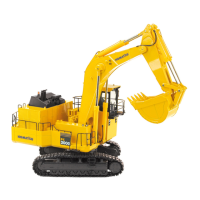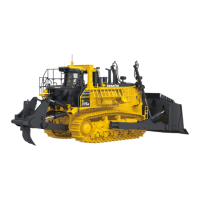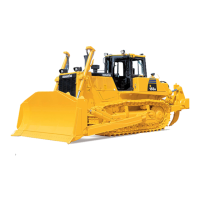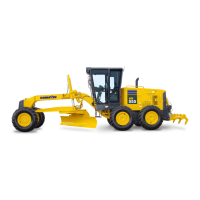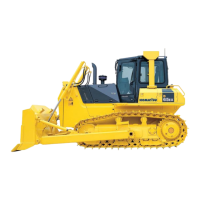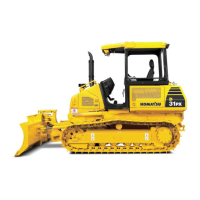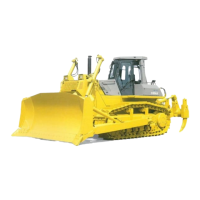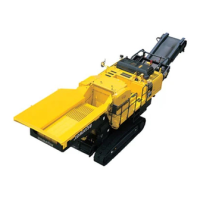2-72
12. OPERATION
12.18 HANDLING THE TIRES
12.18.1 PRECAUTIONS WHEN HANDLING TIRES
CAUTION
If a tire has reached any of the following service limits, there
is danger that the tire may burst or cause an accident, so to
ensure safety, replace it with a new tire.
‡ Service limits for wear
fi When the remaining depth of the groove on construction
equipment tires (at a point approx. 1/4 of the tread width)
is 15% of the groove depth on a new tire.
fi When the tire shows marked uneven wear, stepped wear or
other abnormal wear, or when the cord layer is exposed.
‡ Service limits for damage
fi When there is external damage extending to the cord or
when the cord is broken
fi When the cord is cut or there is dragging
fi When the tire is peeling (there is separation)
fi When the bead is damaged
fi For tubeless tires, when there is air leakage or improper
repair
Please contact your Komatsu distributor when replacing the
tires. It is dangerous to jack up the machine without taking due care.
12.18.2 TIRE PRESSURE
Measure the tire pressure before starting operations, when the
tires are cool.
If the tire inflation pressure is too low, there will be overload; if
it is too high, it will cause tire cuts and shock burst. To prevent these
problems, adjust the tire inflation pressure according to the table on
the next page.
Deflection ratio =
H – h
x 100
H
As a guideline that can be checked visibly, the deflection ratio of
the front tire (deflection/free height) is as follows.
When carrying normal load (lift arm horizontal): Approx. 10 – 15%
When digging (rear wheels off ground): Approx. 20 – 25%
When checking the tire inflation pressure, check also for small
scratches or peeling of the tire, for nails or pieces of metal which
may cause punctures, and for any abnormal wear.
Clearing fallen stones and rocks from the operating area and
maintaining the surface will extend the tire life and give improved
economy.
‡ For operations on normal road surfaces,
rock digging operations:
....................................... High end of range in air pressure chart
‡ Stockpile operations on soft ground:
....................................... Average pressure in air pressure chart
‡ Operations on sand (operations not using much digging force)
....................................... Low end of range in air pressure chart

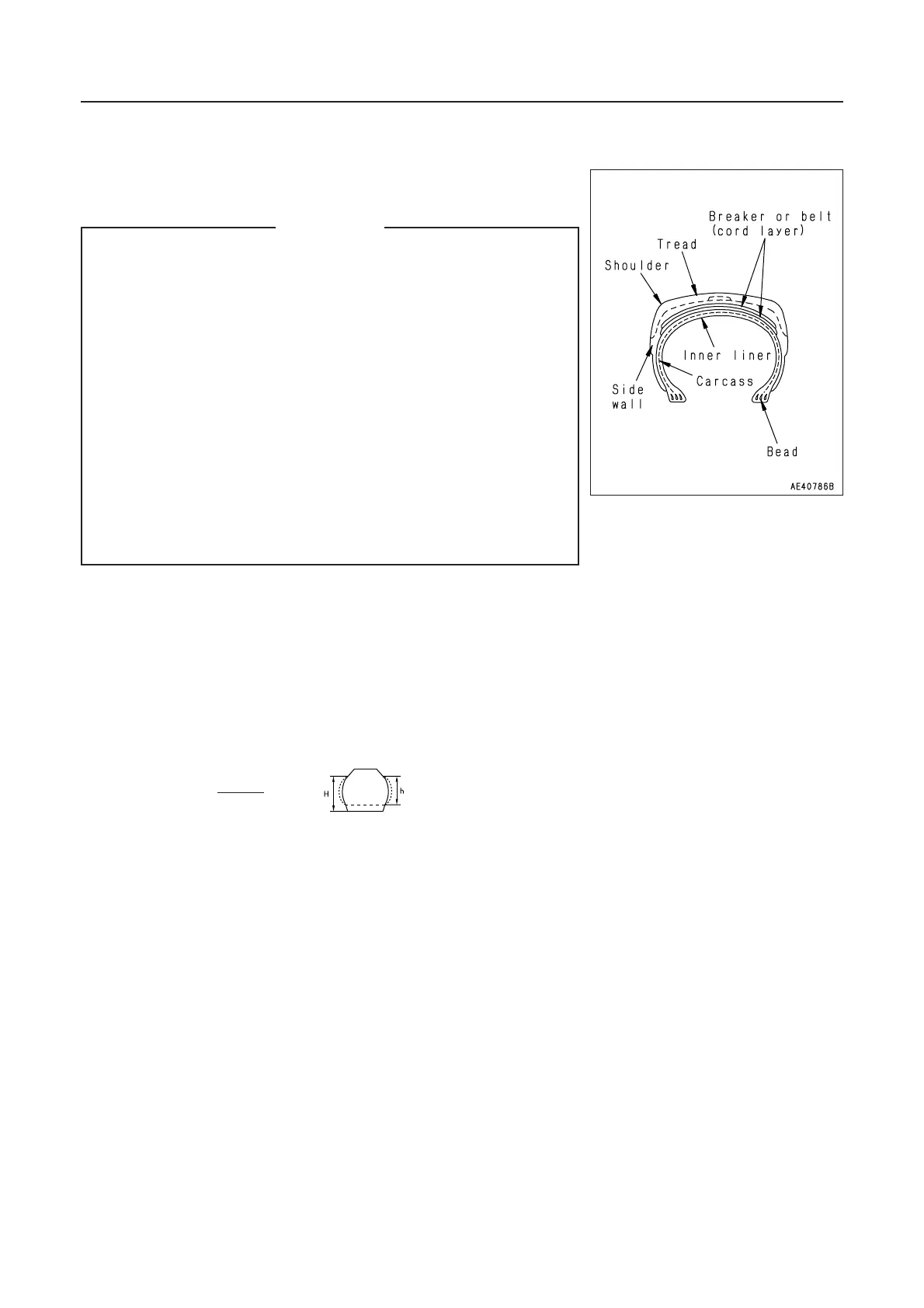